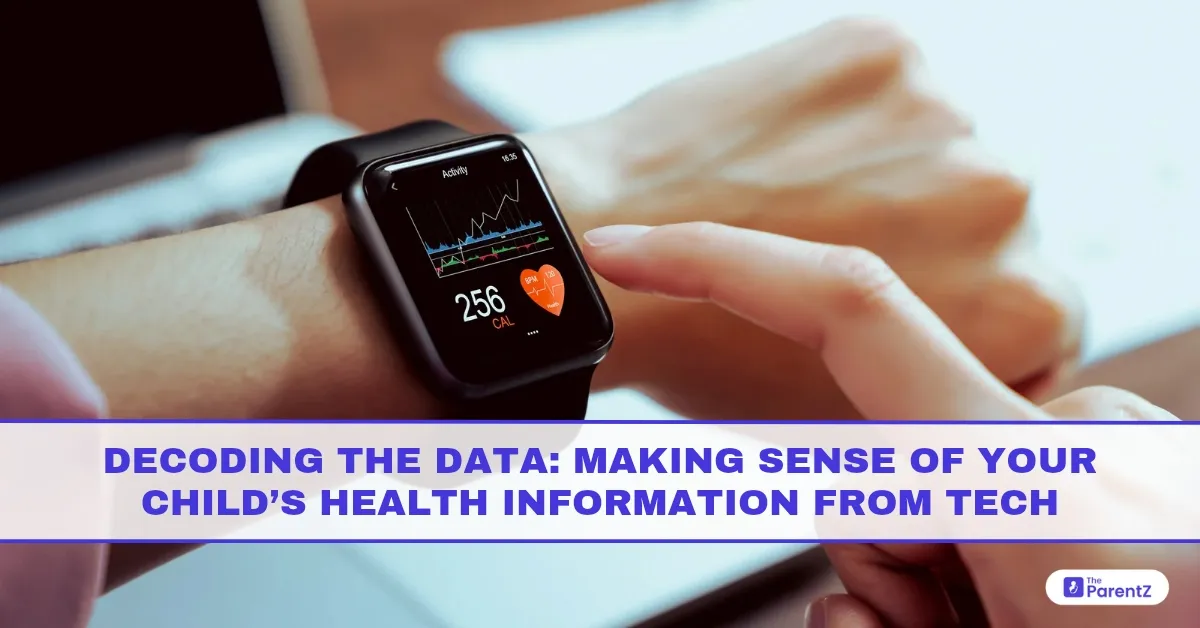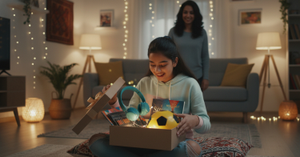Riya stared at the blinking numbers on her son Aarav’s smartwatch.
“10,238 steps, 7.5 hours of sleep, 132 active minutes, 18 minutes of screen time… but what does it all mean?” she wondered. Aarav, an energetic 8-year-old, seemed perfectly fine, yet the constant buzz of health data left Riya both curious and anxious.
Sound familiar? If you’ve ever found yourself puzzled by the deluge of health metrics from your child’s devices, you’re not alone. With health technology becoming a part of every family’s life, smartwatches, fitness trackers, sleep apps, and even AI-powered toothbrushes, parents and kids alike are drowning in a sea of numbers. But here’s the big question: how much of this data is truly useful, and what should we focus on for a healthy, happy child?
1. The Numbers Game: Understanding What Really Matters
Before we get lost in graphs and dashboards, let’s remember a key fact from epidemiology:
Numbers tell a story, but they don’t tell the whole story.
Take step counts, for example. Fitness trackers tell us 10,000 steps is a magic number, but did you know that this target came from a 1960s Japanese marketing campaign, not a scientific study? Research from around the world, including Indian studies like the ICMR-INDIAB survey (2015), shows that for kids, 60 minutes of moderate to vigorous physical activity per day is more important than step counts alone.
What’s important:
Active playtime, not just structured exercise.
Less screen time, ideally under 2 hours per day, as per WHO guidelines.
Adequate sleep (more on that later).
So, when Aarav’s smartwatch says “132 active minutes,” that’s fantastic, but Riya needn’t worry if he didn’t hit the 10,000-step target. The focus should be on movement variety, climbing trees, cycling, dancing, and just plain running around.
2. Sleep Data: Decoding the Zzzs
Now, let’s talk about sleep trackers. Parents often ask:
“Is my child sleeping enough? Should I trust these apps?”
Studies like the National Sleep Foundation’s guidelines and Indian pediatric sleep research suggest:
- 3–5 years: 10–13 hours of sleep
- 6–12 years: 9–12 hours
- Teens: 8–10 hours
Apps may give you data like sleep stages (light, deep, REM), but remember these are estimates based on movement patterns, not medical-grade sleep studies (polysomnography). If the app says Aarav had only 7.5 hours of sleep, but he wakes up cheerful, energetic, and focused, don’t panic. Watch for daytime signs like irritability, mood swings, or poor concentration to guide you better than numbers alone.
3. Screen Time and Mental Health: The Data Behind Digital Dilemmas
Here’s where the epidemiology gets juicy. Studies like the Global Burden of Disease Study (Lancet 2019) and Indian research by AIIMS, New Delhi, have shown that excessive screen time is linked to:
- Obesity
- Anxiety and depression
- Sleep disturbances
- Vision problems (Computer Vision Syndrome)
But here’s the twist: not all screen time is bad. The key is quality and context. Educational games, video calls with grandparents, or creating digital art—these can be positive. It’s the passive, endless scrolling and violent or overstimulating content that can harm mental health.
Pro-tip for parents and kids: Try the 20-20-20 rule for screen use every 20 minutes, look at something 20 feet away for 20 seconds. It’s a simple eye-saver!
4. Growth Charts and Percentiles: Are You Comparing Apples to Apples?
Your child’s health report might say “weight: 75th percentile” or “height: 50th percentile.” But what does that mean?
In epidemiology, a percentile is a way of comparing your child to a reference population. For example, if Aarav is in the 75th percentile for weight, he weighs more than 75% of kids his age. But remember:
- One percentile doesn’t tell the whole story.
- A growth trend over time is more important than a single number.
India uses the ICMR-NCHS growth charts and the WHO growth standards as references. If your child is consistently growing along a percentile curve, whether it’s the 25th or 85th, that’s usually fine. Sudden jumps or drops may need attention.
5. The Fun Side of Health Data: How Kids Can Get Involved
Let’s not forget the fun!
Data can empower kids when used right. Encourage your child to:
- Set weekly step challenges—walk to the local park instead of driving.
- Create a sleep log—see how they feel after different sleep hours.
- Learn to cook a “rainbow plate”—track how many colors of fruits and veggies they eat.
- Celebrate “No-Screen Sundays” as a family!
This not only builds healthy habits but also teaches kids to be critical thinkers, not just passive data receivers.
6. When to Worry (and When Not To)
Let’s simplify it:
| Data Point | When to Relax | When to Seek Help |
| Steps/Active Minutes | If your child is playful and active, don’t stress over numbers. | If they’re sluggish, avoiding play, or gaining weight. |
| Sleep | If they wake up refreshed and happy. | If they’re constantly sleepy, moody, or not growing well. |
| Screen Time | Occasional screen time for learning and fun. | If they’re irritable, sleep-deprived, or addicted to screens. |
| Growth Percentiles | If growth is steady over time. | Sudden weight loss/gain, growth stalling. |
The Bottom Line: Your Child is More Than a Number
The best health tool is you, the parent, not a device or app. Tech can help track trends, but it’s your loving eyes, ears, and heart that will notice when something’s off.
So the next time Aarav’s smartwatch buzzes, Riya can smile, knowing she has the knowledge to decode the data and not let the data decode her.
Let’s raise healthy, happy kids, one joyful step at a time!








Be the first one to comment on this story.